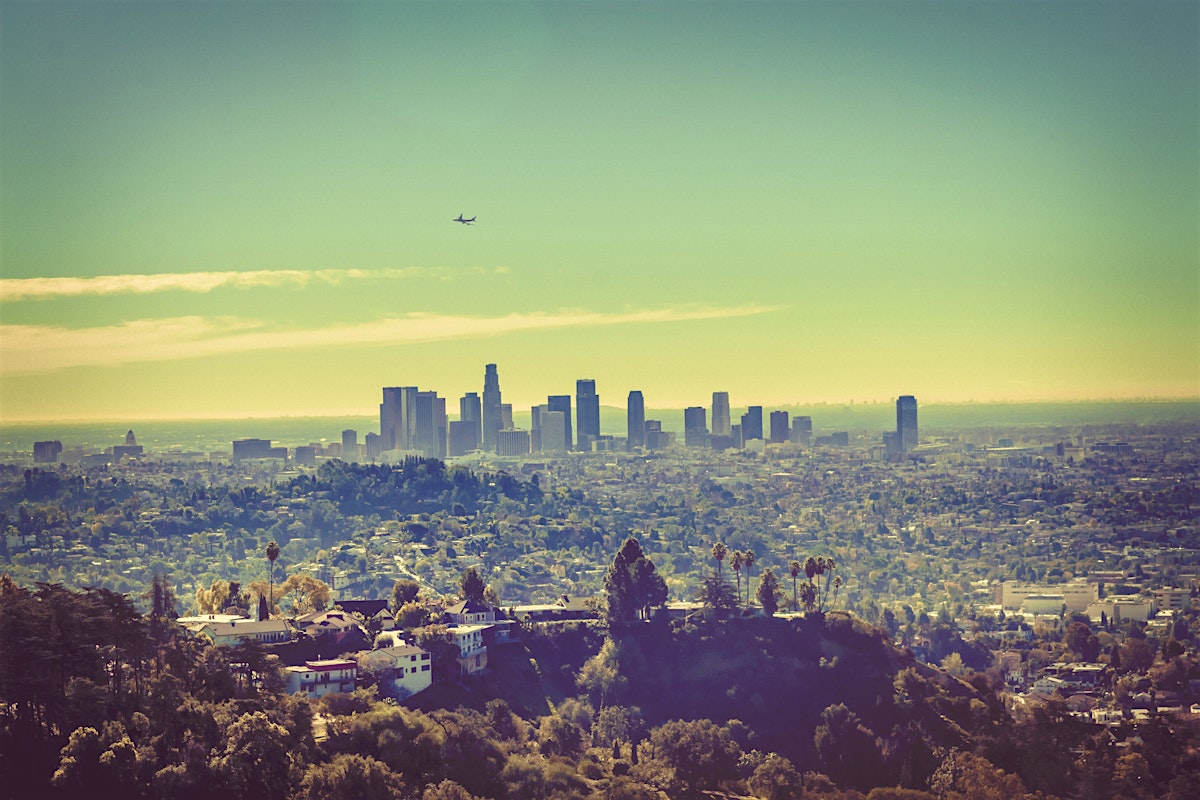For LARB, Bonnie Johnson writs about the long, rich history that Los Angeles bears to intentional community making. The liberal city, she writes, has invented its own real-life versions of hippie utopias, though many have collapsed due to various external forces (environment or state-related). Read Johnson in partial below, in full via LARB.
Today in Los Angeles, we have cooperative facilities for students and seniors, and smaller group houses of gamers and nudists. But the only open, age-diverse intentional community of 10 or more is the Eco-Village in Koreatown. This wasn’t always the case. A century ago, long before the 1980s Hollywood punk flophouse Disgraceland and the earlier Westside clean-living cult Synanon, the city had three thriving communes. They were the Theosophist community of Krotona in Beachwood Canyon, the socialist Llano del Rio in Palmdale, and the broadly anarchist Edendale farm in Silver Lake. Like many such settlements, they collapsed not due to infighting, but to outside forces — in these cases development, drought, and the LAPD.
In a perfectly Californian confluence, Edendale’s early movie studios shared turf with a posse of Mexican revolutionaries and sympathetic Wobblies. Outfits like Mack Sennett’s, which filmed slapstick shorts on the streets of Silver Lake and Echo Park, attracted famously unorthodox stars like Charlie Chaplin, Roscoe Arbuckle, and Gloria Swanson. The last advocated macrobiotic vegetarianism long before its time. Not far from Sennett’s headquarters, celebrity evangelist Aimee Semple McPherson would soon set up her mega-church, Angelus Temple, which stands to this day. Meanwhile, radicals agitated at the Plaza de Los Angeles and convened at the nearby Italian Hall. Emma Goldman often visited on trips from New York’s East Village, and Charlotte Perkins Gilman had earlier moved to Pasadena, where she got involved in the Ebell Society and suffrage work while theorizing concepts for feminist housing.
In 1911, exiled Ricardo Flores Magón, of the Partido Liberal Mexicano, had led a seizure of Tijuana, after which the US federal government jailed him at McNeil Island for violating national neutrality. Newly sprung in 1914, Magón formed a contingent that rented a five-acre plot at the northwest tip of Ivanhoe Reservoir. For about a year, the communards lived in wooden shacks, raising chickens and growing produce they sold on Olvera Street downtown. They ran a paper called Regeneración, and Magón penned the polemic ensemble drama Tierra y Libertad. But he had an influential enemy in Los Angeles Times publisher Harrison Gray Otis, whose sizeable assets in Baja had come under threat from the Magonistas’s earlier occupation. In 1916, the LAPD raided the farm and arrested Magón. He died at Leavenworth, serving a 20-year sentence for sedition.
Job Harriman, a lawyer, former clergyman, and one-time running mate to socialist Eugene V. Debs on the national ticket, narrowly lost the LA mayoral election in 1911. Setting out to demonstrate a socialist alternative, he leveraged local friends to buy 9,000 acres with water rights at the site of a former temperance colony about 45 miles north. He appointed a board and began selling stock for Llano del Rio. Applicants had to buy into the colony in equal shares, though they could do so on credit. They needed references attesting to their work ethic and commitment to the ideology. Shamefully, they also had to be white, because racial mixing was, according to their paper, “not deemed expedient.”
Six months after its opening in 1914, the colony had grown to 150 people, in addition to many farm animals, and had a post office, dairy, and laundry. Using local materials, the colonists built a meeting hall and hotel, as well as an aqueduct and water tank connected to nearby Big Rock Creek. At first, members lived in tents and dormitories, then in small adobe houses. Like Gilman and other feminist thinkers, site planner Alice Constance Austin envisioned kitchen-free homes with communal daycare, though Llano ultimately fell short of her designs. Largely populated by western farmers and businessmen and their families, the development grew to 1,100 and produced almost all of its own food, planting orchards, alfalfa, corn, and grain. The colonists also wove textiles and ran a print shop for their paper. The schools were Montessori-style, hands-on, and encouraged self-rule. The group held picnics, shows, and ball games; its twice-weekly dances were a legendary highlight.
*Image of Los Angeles via Lonely Planet
